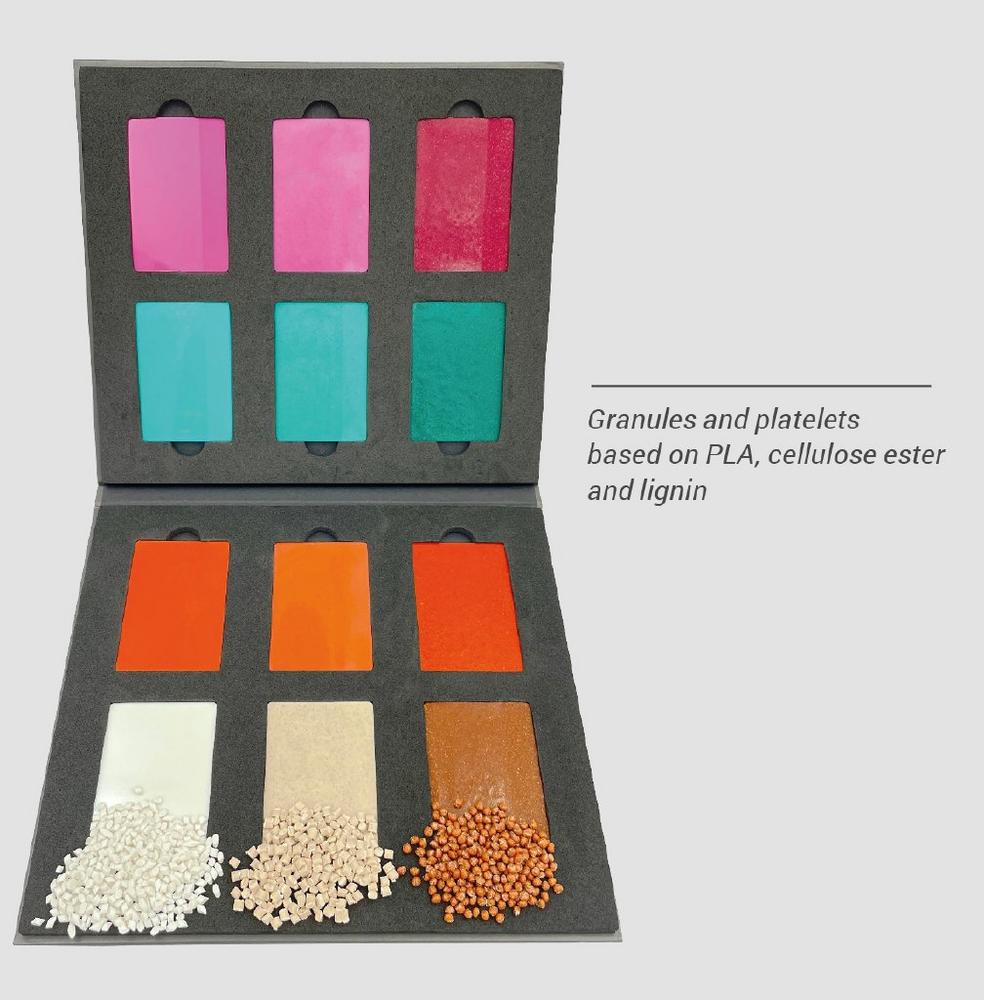Bioplastics can be broadly divided into three groups in terms of materials:
• Bio-based plastics, i.e. made with raw materials of natural origin.
• Biodegradable and bio-based plastics
• Biodegradable plastics (can be based on fossil raw materials)
To effectively promote the decarbonization and avoidance of crude oil referred to in the introduction, the minimum requirement is that bio-plastics should be of natural origin. Degradability is currently of secondary importance because, with a few exceptions, bacterial decomposition only occurs under industrial conditions. Municipal waste disposal companies also often refuse to accept plastic bags in organic waste, irrespective of whether they are labeled as degradable. These bags will therefore end up in the "yellow garbage container" or even in the residual waste.
After the ban on disposable cutlery and straws made from crude oil-based plastics, new biomaterials are constantly being developed for this market. In contrast to the mostly uncolored food packaging, an attractive coloring for product differentiation plays a major role here. Yet only a few bioplastics manufacturers offer pre-colored compounds and retrospective compounding is usually not practical due to the often thermal sensitivity of the products. Processors of bioplastics must therefore approach masterbatchers with their color requirements and hope that they either have a compatible carrier for precisely that biomaterial in their range or can produce color concentrates based on the same bioplastic. In such cases, thermal pre-damage of the base material during masterbatch production is to be expected, which can have a negative impact on the quality of the end product.
Liquid colors can offer several advantages in this area: All common thermoplastics can be colored with the liquid universal carriers. In order to minimize the fossil content of the end product, ROWASOL offers a special organic carrier system based on purely plant-based raw materials. Additionally, liquid colors are always manufactured at room temperature – this excludes thermal pre-damage and ensures a very low energy input and CO2 footprint during production (approx. 2-4 %).To demonstrate the universality of plant-based ROWASOL liquid colors in bioplastics, three different thermoplastic materials of biological origin were processed via injection molding with the same liquid colors and the same dosage (1 %). In the image, the granules and platelets based on PLA, cellulose ester and lignin (from left) can be seen below without color addition.
Three liquid colored platelets are shown above each of them. Different color shades result depending on the color tone of the base material. The visible surface effects are caused by the platelet geometry with 3 mm layer thickness, an unfavorable condition for the materials. Common to all, however, is a very good and uniform coloring with a color addition of only 1 %. Strong color shades can even be achieved using the relatively dark lignin raw material via liquid coloring.
ROWASOL provides feasibility studies in the form of screenings as a service for material manufacturers in order to evaluate possible color ranges. Processors of bio-thermoplastics can, of course, also approach ROWASOL with individual color requirements and request advice from the experts.
ROWASOL, founded in 2004, is a specialist for liquid colors and dosing systems. The product portfolio is supplemented, among other things, by the ROWASOL COLOR CUBE for resource-saving product handling. Both in extrusion and injection molding, the use of liquid color offers savings in coloring costs and in the production process in general. The industry focus is on the plastics processing industry.
ROWA GROUP Holding GmbH
Siemensstraße 1-9
25421 Pinneberg
Telefon: +49 (4101) 70606
Telefax: +49 (4101) 706203
http://www.rowa-group.com
Telefon: +49 (4101) 706-335
E-Mail: u.wilkens@rowasol.de
![]()

